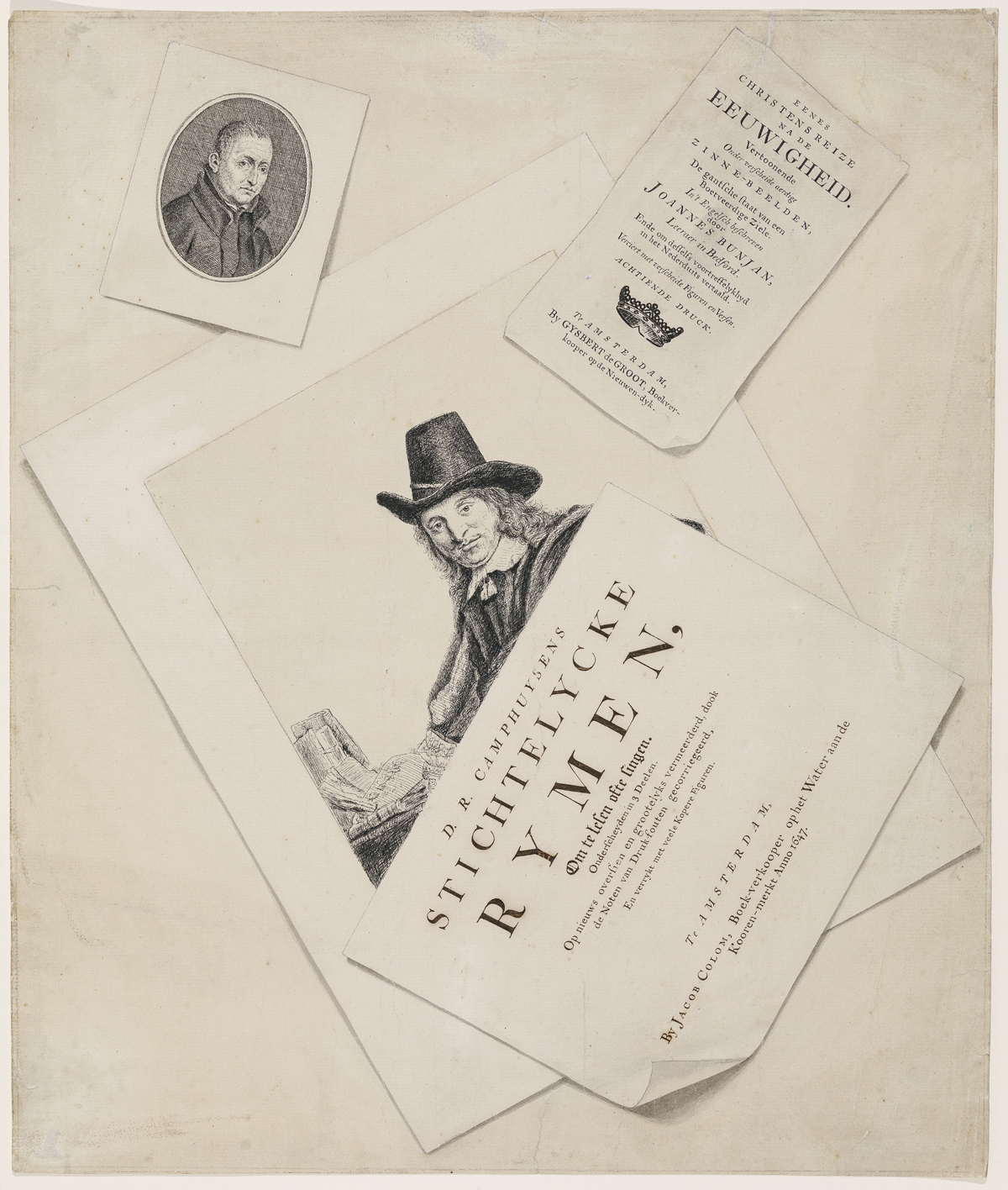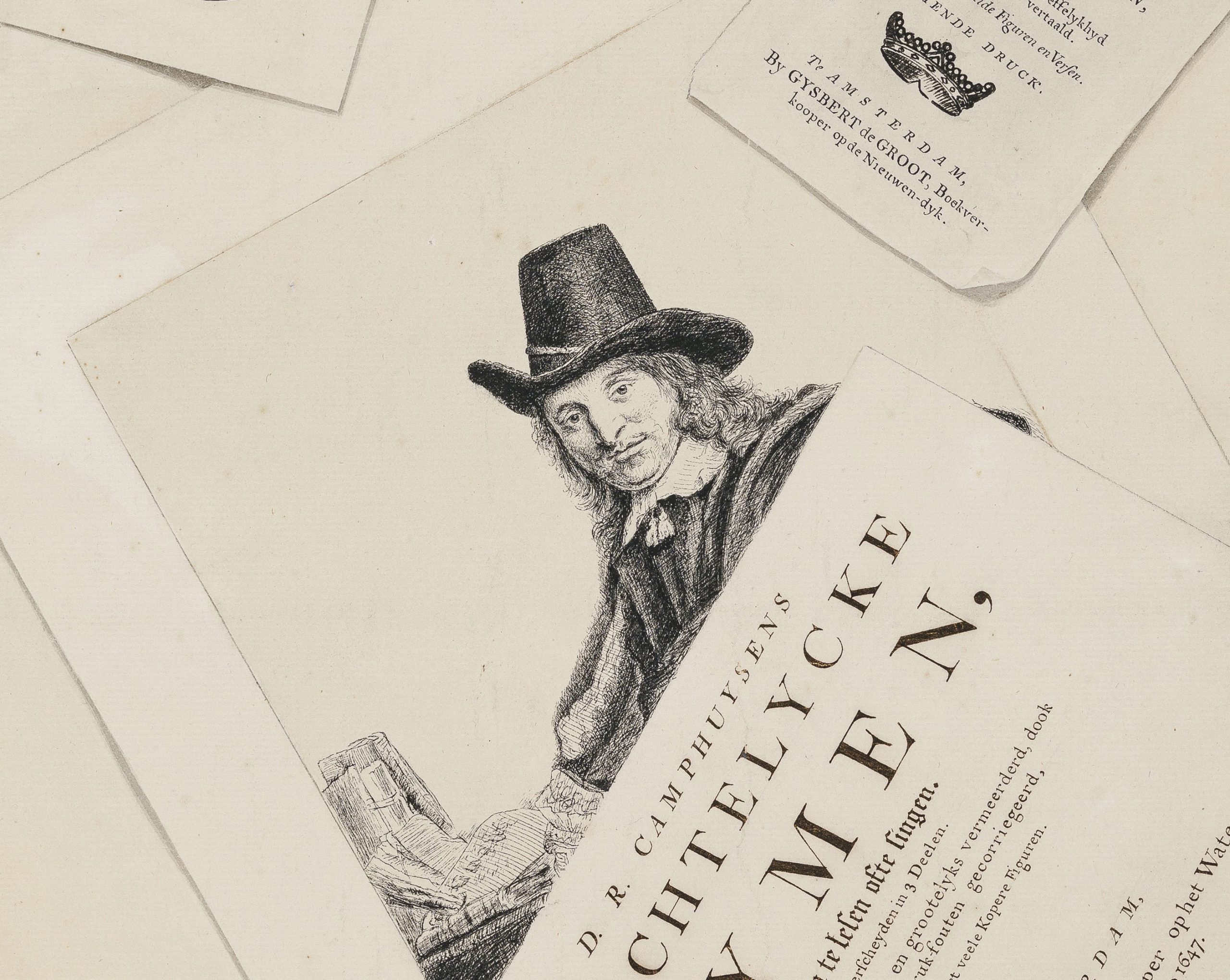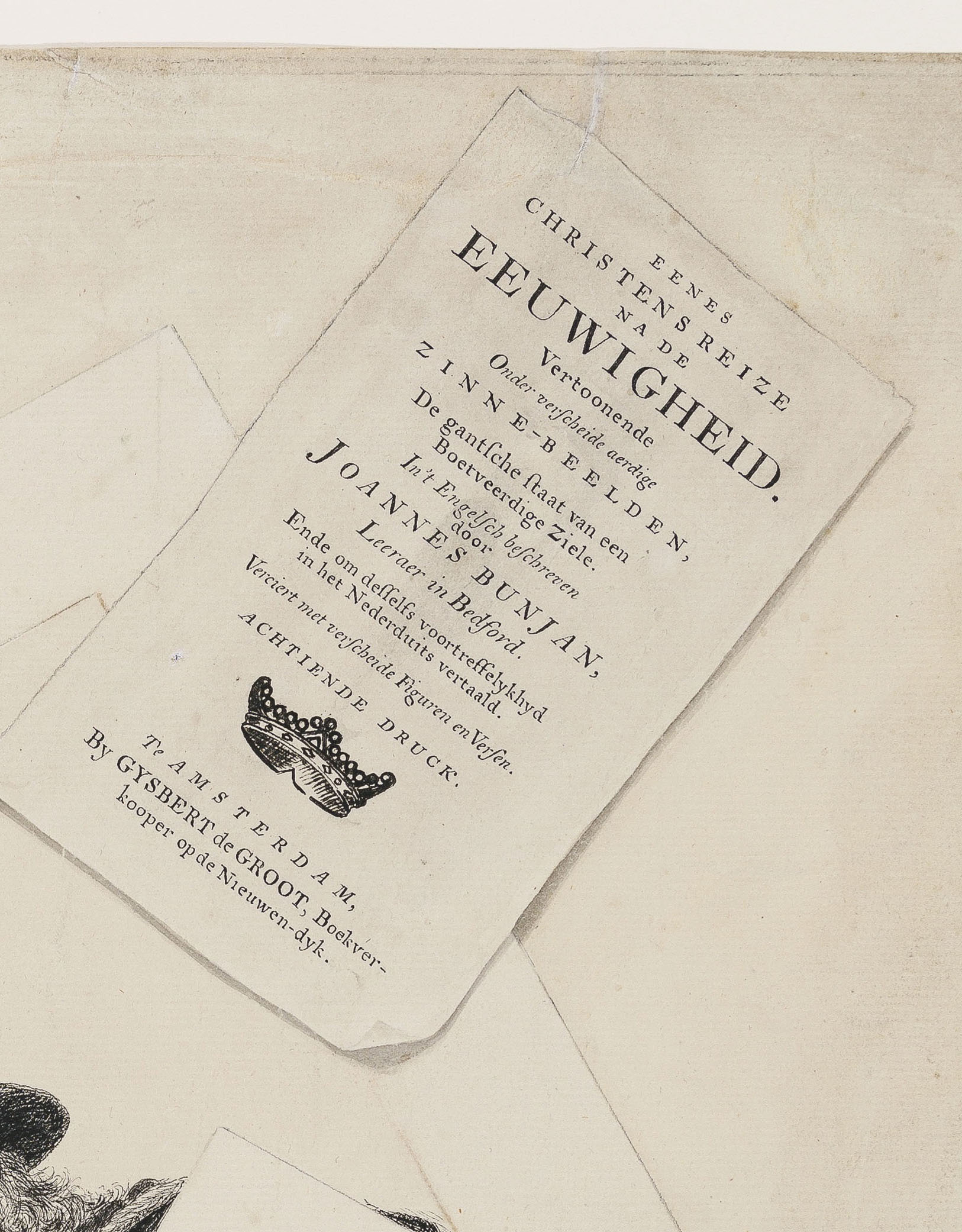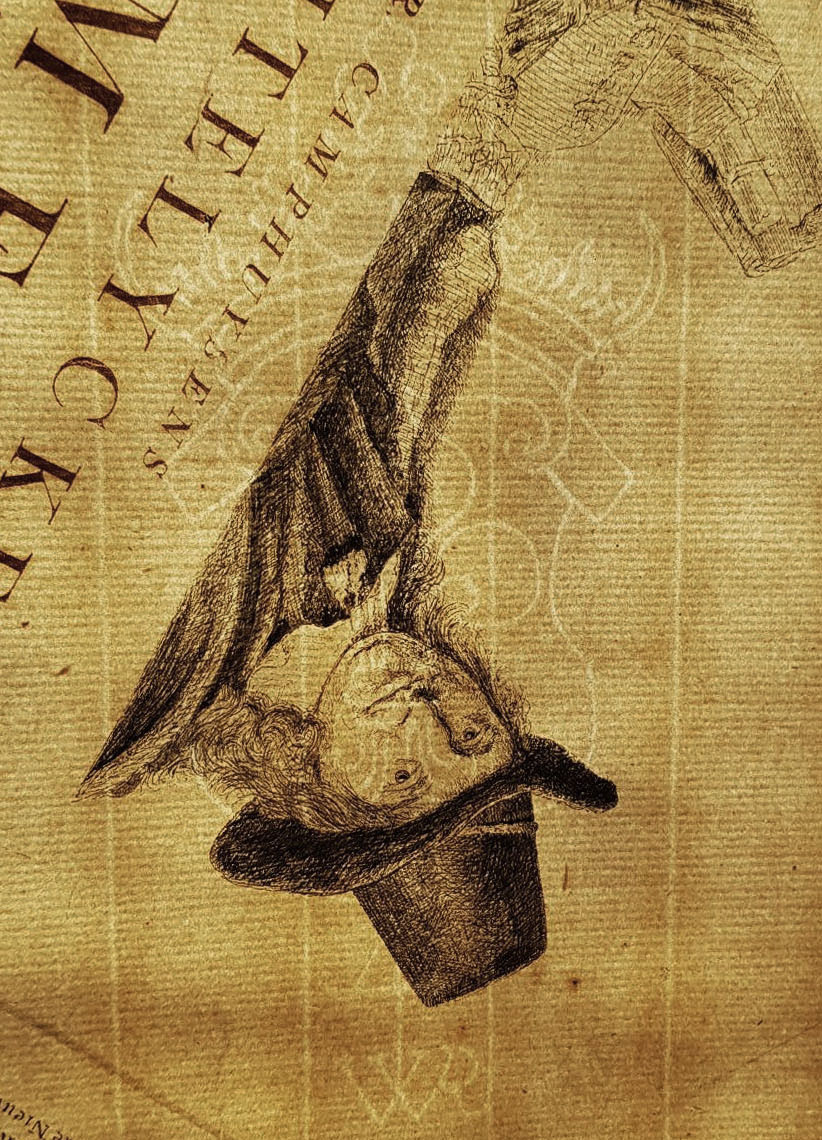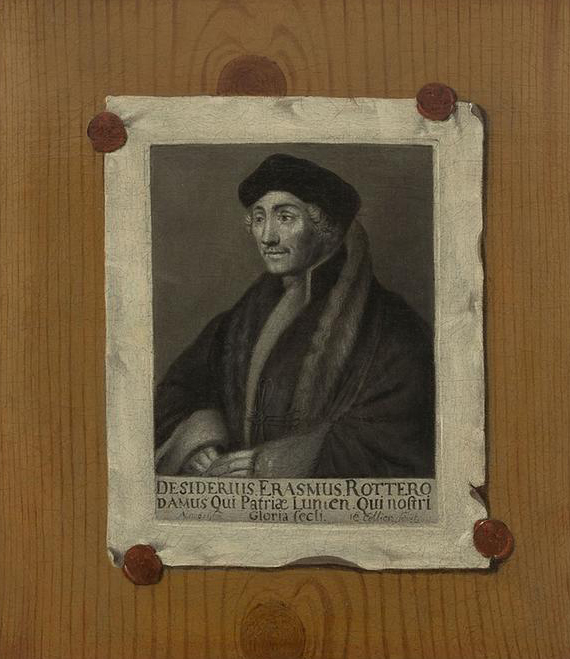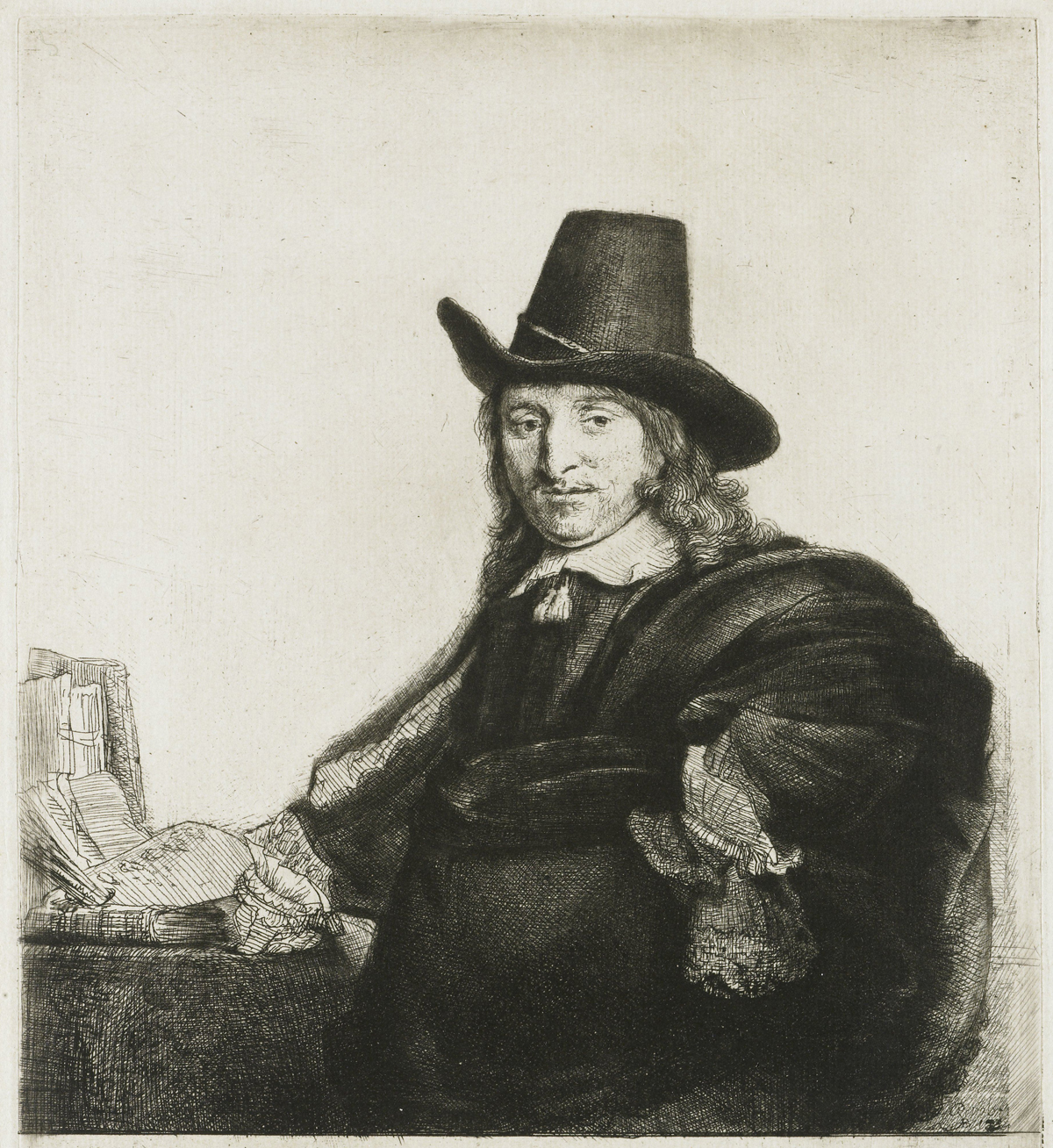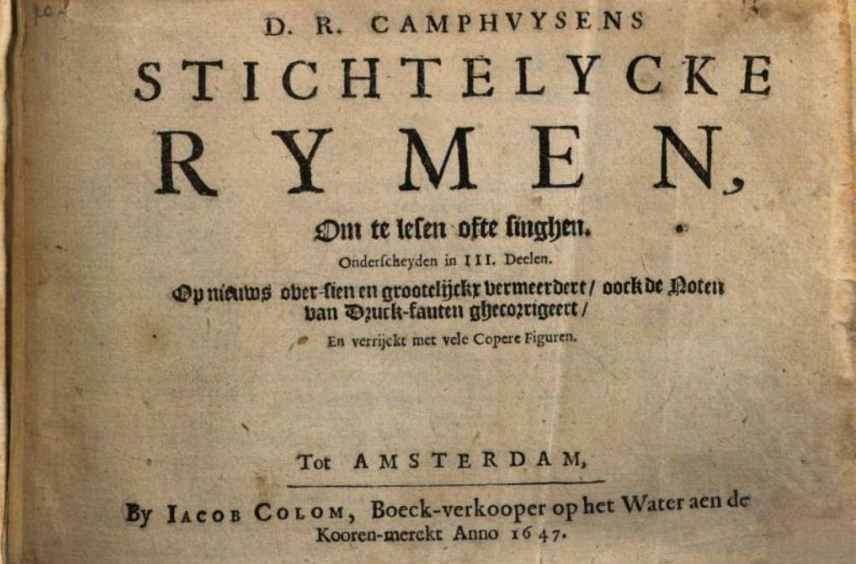DUTCH SCHOOL, late 18th century
Dutch School, late 18th century
A ‘bedriegertje’ with printed papers around Rembrandt’s etching of Jan Asselijn
Pencil, pen and black ink, brown wash, partly incised, watermark French lily, 429 x 361 mm (16.9 x 14.2 inch)
Provenance
Private collection, The Netherlands
***
There existed a vogue for trompe l’oeil (‘bedriegertje’ in Dutch) representations of meticulously copied drawn printed and other papers during the Dutch eighteenth century, which evolved out of the Golden Age fashion for trompe l’oeil paintings by artists such as Cornelis Norbertus Gijsbrechts (1625/29–1675) and Edwaert Collier (1642–1708), by whom a trompe l’oeil ‘printed’ portrait of Desiderius Erasmus is preserved in the Rotterdam Museum (fig.).1
In the centre of the composition is an impression of the etching by Rembrandt (1606–1669) of the Italianate painter Jan Asselijn, called Crabbetje (c.1610–1652), made around 1647 (fig.).2 Placed over it is an exact drawn copy of the title page of ‘Stichtelycke rymen, om te lesen ofte singhen’ by Dirk Rafaelsz Camphuysen (1586–1627), printed in Amsterdam also in the year 1647 (fig.),3 and another exact drawn copy of ‘Eenes Christens Reize na de Eeuwigheid’, a Dutch translation of A Pilgrim’s Progress by the Puritan preacher John Bunyan (1628–1688), originally published in London 1678. The depicted Dutch edition was printed in Amsterdam, the ‘achtiende druck’, or eighteenth edition. The identity of the sitter in the carefully copied oval portrait remains unknown.
Although the attribution of the present elaborate drawing has thus escaped art historians, it is a tour de force of trompe l’oeil, an assemblage of various carefully delineated ‘printed pages’, showing the unidentified artist’s meticulous skills in calligraphy, around a superbly drawn copy of Rembrandt’s etching, the delicate etching lines captured with particular finesse, and the artist has even indented the outlines of the etching with a sharp utensil, recreating the impression of the etching plate. Drawings and etchings by Rembrandt were eagerly collected during the period, and this rare trompe l’oeil should be considered in this context. The exact meaning of this group of ‘printed’ papers is no longer known, but the sheet was presumably drawn at the particular wishes of a collector of ‘papierconst’, paper art, with interests in literature and Puritanism.
1. Oil on panel, 32.5 x 28.5 cm, signed and dated ‘E Collier fecit / Anno 1693’, inv. no. 10550-A; N. van der Blom, ‘Erasmiana’, Rotterdam Jaarboekje (1973), pp. 288-289, repr..
2. An impression is preserved in the Rijksprentenkabinet, Amsterdam, inv. no. RP-P-OB-555, etching, 215 x 170 mm, Bartsch 277-3.
3. An impression is preserved in the Universiteitsbibliotheek Utrecht, inv. no. ODC 341 obl.
